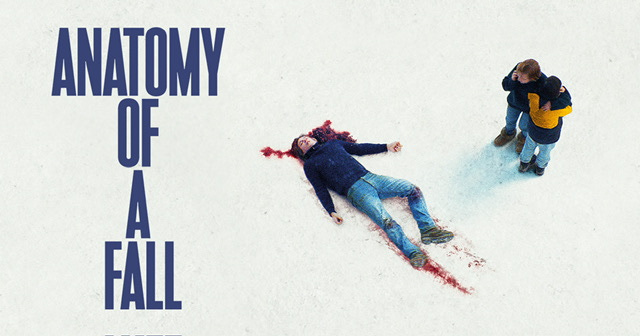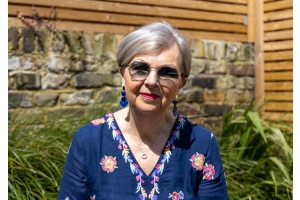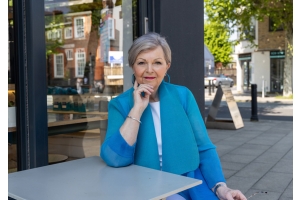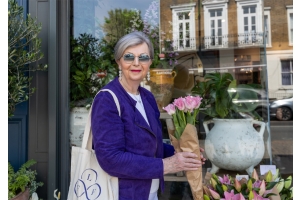
Yes, very nice, thank you, I had a lovely Easter break. Did a bit of destructive gardening, hacking at a monstrous plant which had taken over part of my tiny garden and also attempting to root out the Vinca which has colonised the entire back bed. And in between, I managed to binge-watch the whole of ‘Under the Banner of Heaven’ a riveting US crime drama set in a Mormon community in Utah, and follow a row on Twitter about woke scones at the National Trust. And the more I thought about both, the more I realised that they had something very important in common.
Why? Because both stories are about revisiting the past in order to serve a particular agenda.
‘Under the Banner of Heaven’ follows the attempt of a family of five brothers to use historical precedent of the polygamy espoused by the founders of Mormonism to challenge their modern practice of monogamy. Unsurprisingly their wives have something to say about this and, somewhat inevitably, there are tragic consequences.
The ‘woke scone’ row insists that a particular version of the past must be preserved no matter what. Put simply, the vegan scone being sold in National Trust cafes over Easter was being used as a proxy for a creeping modern revisionism of an old tradition because it substituted margarine for butter in the recipe. On Twitter, Celia Richardson, Director of Communications at the NT put up a spirited defence against the condemnatory articles which appeared in the Mail:
“Yesterday the Daily Mail claimed @nationaltrust has 'secretly' stopped using butter in its scones in a 'virtue-signalling betrayal' of heritage. It now transpires the very same Daily Mail glowingly published our scone recipe in 2018 MADE WITH MARGARINE!!!”
Clearly, this has absolutely nothing to do with scones! So what is really going on here? We may need a bit of background history for context. Founded in 1895 and given statutory powers and responsibilities by an Act of Parliament in 1907, the National Trust holds hundreds of sites of historic interest and natural beauty across the whole country ‘for the benefit of the nation.’ It is supported by more than five million members and tens of thousands of volunteers. In effect the National Trust at each of its properties is responsible for telling us the story of our past. However, to preserve and present sites of historic interest to the public is not as straightforward as it would first appear. Why? Because it must necessarily mean taking a view of the history concerned.
I have always loved the study of history. I chose to do so at both an advanced level at school and in a degree that I read for in the 1980s. Churchill apparently said that “history is written by the victors” and I was firmly educated at school in the post-war world of the 1950s and 60s in a tradition that saw Britain cast in a positive light throughout most of history. I grew up with the idea that we are a powerful, strong and vigorous nation which has spread its worthy values and high standards of ethics and probity to very many parts of the globe. It was a history full of great men and great courage which implied that all of it should fill us with enormous pride in who we are as a people and as a nation.
My first realisation that other nations may view a certain period of history somewhat differently from our British view came at the age of 16 when I first visited Paris and wondered why we have a Waterloo station whilst Paris has a Gare d’Austerlitz. Clearly the French had a very different way of remembering their Emperor Napoleon from the way we did! This taught me that history is complicated because of competing narratives for the same events. It also taught me that there is no such thing as 20:20 vision as a lens through which to view the past.
If the National Trust is tasked to tell our history, then it begs the question how it should do so when our world of the twenty-first century is so very different from the eighteenth and nineteenth centuries when most of their historic houses were built. And, clearly for our modern sensibilities, the two most contentious areas of our history concern imperial conquest and Atlantic slavery. Do you remember the brouhaha that ensued when the statue of Sir Edward Colston was unceremoniously toppled from its plinth and tipped into the harbour in Bristol? What on earth was going on?
Here was a man, born in 1636, who had been honoured and celebrated as a great philanthropist throughout the Bristol area with streets and public buildings named after him and a statue erected in his honour in 1895. At that time, the fact that much of his wealth derived from the slave trade was obviously thought to be acceptable given that the practice was widely condoned in Europe during his long life which predated the abolition movement. However, since the 1990s there had been a growing demand in Bristol for a reappraisal of Colston and the source of his wealth, which culminated in June 2020 with protestors taking the matter into their own hands and attempting to destroy what they saw as a symbol of an oppressive and racist practice.
This saga is a useful illustration of the competing arguments about how our history should be remembered and told. On the one hand is the view that figures like Colston, long celebrated in Bristol as a great and laudable figure, need to be reappraised so that their story includes the inequalities and injustices upon which their wealth and philanthropy were based. The alternative view is that Colston was (and still is) an admirable figure onto whom we are now overlaying our present-day moral standards because we are offended by behaviour and views which were perfectly acceptable during his lifetime. And it is into this polarising row that the National Trust has recently been drawn.
The NT’s approach can best be illustrated by the story of one of their properties, Penrhyn on the edge of Snowdonia. The house, built in the 1820s, with its collection of paintings, was funded by money from enslaved labour in the Caribbean, and from the slate quarries nearby. By 1898 Lord Penrhyn was drawing an income of £133,000 as the estate was exporting slate globally. However, it was reported in 1828 that every year at least 150 men who worked in the slate quarries were injured and seven or eight had lost their lives. Unsurprisingly, there were frequent and bitter labour disputes, culminating in the quarry workers’ strike of 1900, which lasted for three years — the longest industrial conflict in British history. The local community still bears the scars and divisions of that strike, which ended only when the quarrymen were in effect starved into returning to work. A hundred years later, some local residents still refused on principle to visit Penrhyn.
How best to reflect this history alongside the paintings which adorn the walls of the house? By foregrounding a large oil painting of 1832 of the quarry which shows the scale and danger of the labour, whilst the contribution of Caribbean enslaved labour to the story of Penrhyn is now acknowledged in photographs of watercolours of the plantations. The image of those who created the wealth is now placed beside the portraits of the family members who benefited from it. The impact of this new approach has been profound. The widening of the history that the castle tells is seen and accepted as a gesture of reconciliation, and a quarry-workers’ choir now sings in the castle. The house is playing its part in reshaping the community.
There is a famous saying ‘The past is a foreign country, they do things differently there’. This implies that we should accept those differences and not seek to revisit that foreign country. I would disagree. As a child of the 1950s I was brought up to be proud of being British and I am no less proud today. However my pride is not in past wars, stories of empire, or the conquests of a few great men, but in being part of an open, accepting and compassionate society that understands the need to tell a balanced rather than selective, tub-thumping story of our past.
And as to getting worked up about the recipe for woke scones being a threat to our heritage, I have better things to concern me, like how to eradicate that bloomin’ Vinca!
Tricia x
Watch Our Latest Video...
Midday Makeup Touch-ups
Sally shows you how to do your makeup touch-ups during the day if you’re out and about. And also, how to ensure your makeup stays in place all day...
Upcoming Events:
Friday 18th April


Film Club: The Anatomy of a Fall
Available on Amazon Prime
Watch the film beforehand and join us for a group discussion!
Day: Friday 18th April 2024
Time: 4 pm
Link: https://us02web.zoom.us/j/86109288705?pwd=TUgzQW5IK0VnUGI2MGdtb0FQN3hxZz09
Meeting ID (if needed): 861 0928 8705
Password (if needed): LOOKFAB














